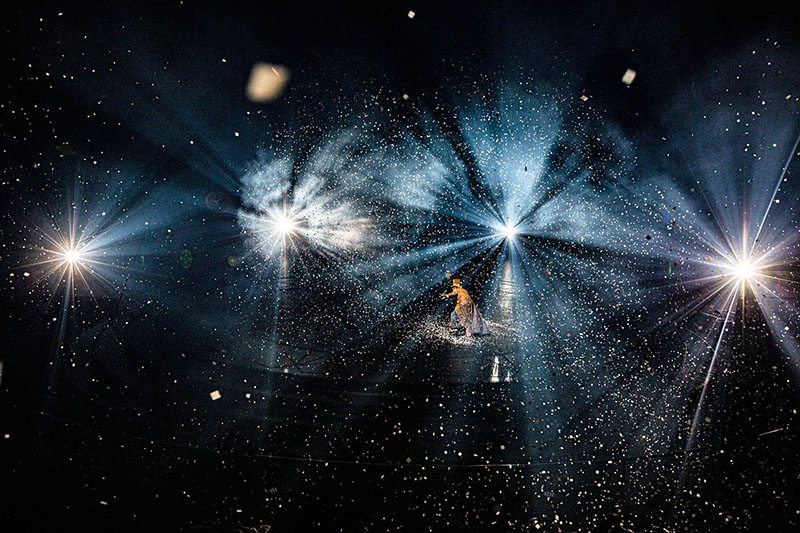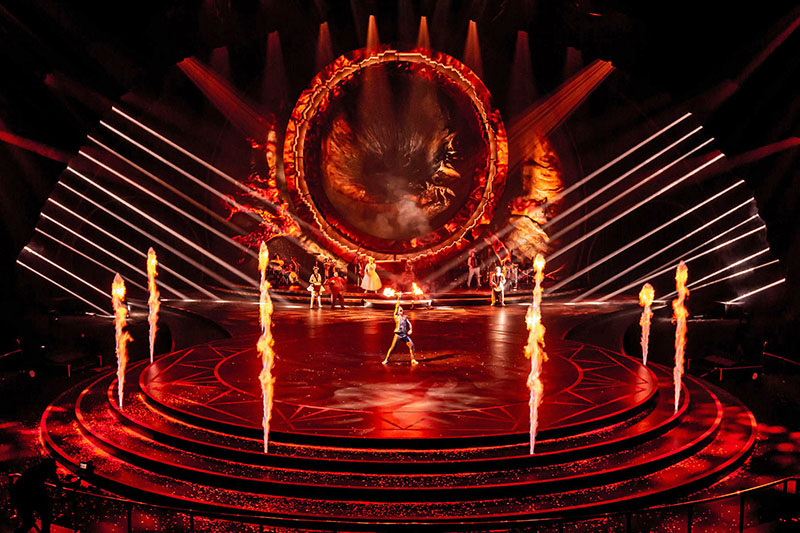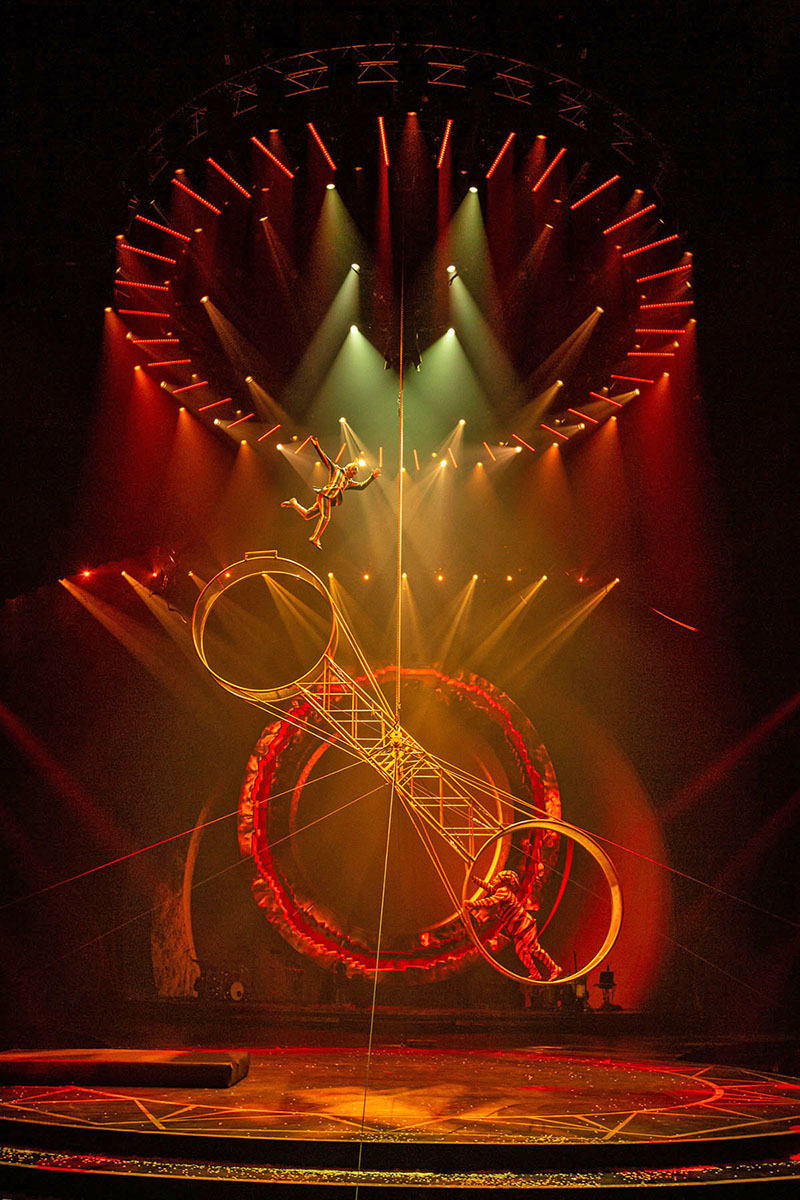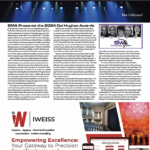
Fuzion is a sumptuous, specially commissioned brand-new Cirque du Soleil production that was staged at the King Abdallah Sports City (KASC) stadium in Jeddah for the 2022 Jeddah Season Festival. The show is a tribute to the company’s innovative creative legacy and celebrates its most iconic acrobatic and theatrical performance achievements. Directed by Mukhtar Omar Sharif Mukhtar with creative direction by Stefan Miljevic, the lighting and set was designed by Mikki Kunttu. Ten months in development from conception to production, Fuzion loaded-in over a two-week period at KASC and ran for 32 performances of the 75-minute-long show.
Elegant, Theatrical, and Vivid
Kunttu had been based in Montreal, Canada at Cirque du Soleil’s international HQ for the two years before the pandemic, during which he returned home to his native Finland. For Fuzion, he relished again working with the diverse and highly talented Cirque du Soleil team. His lighting brief included making an “elegant, theatrical, and vivid” impact. The goal was to recreate the splendor and atmosphere of a classic big-top while ensuring that each guest experienced the similar sense of intimacy as experienced in the classic big-top setting.
The show’s narrative was based on the adventures of two best friends, Antonio and Sebastian, who, with the world in need of more creativity, friendship and love, embarked on a quest to create magical universes in which these can flourish. Kunttu added his own creative magic to this production, using the ‘big-top show’ concept as the starting point for his set and lighting designs; he worked with a similar shaped stage as classic Cirque productions. His stage and lighting rigs were shaped to accommodate acts like the Wheel of Death combined with the close proximity of a 270˚ audience. Unlike a traditional big-top venue where the rigging, flying, and access is restricted by the nature of the construction, the Jeddah venue gave them maximum flexibility with all the space and production facilities they could want.

Safety by Design
While Kunttu needed plenty of power and brightness to light the show in that ample space, there’s a definite art to lighting acrobatics which entails extreme attention to detail, total accuracy, and diligent programming to ensure ultimate safety as well as narrative drama. There must be sufficient light for the aerial and other artists to see each other and their various grab-points and props safely, with all the simultaneous crowd-pleasing lighting effects expected of a nail-biting, high octane Cirque extravaganza. “Safety and making it look awesome are both critical elements naturally and I always try to deliver both within the same solution. The safety factor is not an add-on, but an integral part of the design from the outset,” noted Kunttu. Attaining this successfully is a lot more complex and difficult than he ever makes it appear onstage.
As noted, lighting acrobats safely is one of the most challenging tasks in entertainment. Doing it successfully is “all about homework and meticulously watching the act to see the way they move, how they interact with each other and the technicians and what they need to grab at precise moments. It’s about studying both the technical and the artistic sides of each act and then putting those parameters together with your own creative approach,” says Kunttu.

Lighting Workhorses
With very strong lighting visuals at the core of the overall concept and safety also a key consideration, Kunttu selected 127 BMFL Blades and 59 BMFL WashBeams as the primary lighting fixtures in the rig. The reason for opting for a classic front lens type fixtures instead of LED-faced ones is the simple fact that as LED-faced wash lights have multiple lenses on the front, their potential blinding effect on the artists cannot be so effectively controlled and is very difficult to predict. This detail plays an important role in lighting aerial numbers with no safety lines or nets like the flying trapeze and also for the Wheel of Death or ‘banquine’ routines. He stated, “The BMFL is a fantastic multipurpose fixture and I think it was a game-changer in so many ways. It’s a great workhorse, widely recognized worldwide and you know what to expect in terms of quality and excellence.” Fuzion was the first time he had used Robe BMFLs to light this style of show—although he’s used them on several other productions—and he was “extremely satisfied” with the results. All the BMFLs were positioned at the back of Cirque’s custom circular trusses—commonly referred to as ‘the piste’—and rigged above their circular stage on LX bars 1 and 2.
Kunttu worked alongside two programmers—Matti Leinonen on lighting and Alex Hautamäki mainly on video and some lighting, all three using MA Lighting grandMA2 light consoles. The lighting was supplied by PRG Middle East. Olivier Goulet, Creative Director of Supply and Demand Studio Inc., designed video content, and Leinonen remained in Jeddah to run lighting and video for the duration of Season Festival. Marie-Josée Adam was the executive producer and head of creation. Props were designed by Madeleine Bernatchez and included a disappearing tent comprising 28 x 22m-long fabric panels that ‘evaporated’ in seconds. In all, close to 150 people were involved in the creation and production, with 25 technicians running the show and 39 cast members from 13 different countries and every continent.

This content was shared with PLSN readers by Robe Lighting.


